You planets of Solar system are, according to the International Astronomical Union, celestial bodies that orbit the Sun with enough mass for your own gravity enable them to assume a rounded shape, that is, the shape of static balance. The Solar System is composed of eight planets, classified into telluric and jovians.
→ Which are they:
1- Mercury
2- Venus
3- Earth
4- Mars
5- Jupiter
6- Saturn
7- Uranus
8- Neptune
In this system, there are also five dwarf planets: Ceres, Pluto, haumea, make makeand Eris. To check out more information about the Solar System, as well as an amazing mind map on the topic, go to: Solar System: origin, planets, stars, mental map, curiosities.
Read too:The biggest stars in the Universe
Do not stop now... There's more after the advertising ;)
Order of planets in relation to the Sun
The classification of planets in the Solar System is based on their position in relation to the sun. Thus, in descending order of proximity, we have:
Sun → Mercury → Venus → Earth → Mars → Jupiter → Saturn → Uranus → Neptune |
The formation of the Solar System explains the classification of planets. The theory of this formation is called Nebula Theory, formulated in 1644 and reformulated in 1775 and 1796. According to this theory and its improvement, the Sun and the planets were formed almost simultaneously.
Mind Map: Planets of the Solar System

* To download the mind map in PDF, Click here!
The sun formed in the center of a nebulathrough the rotation of the cloud, which, when contracting, due to gravity, entered into collapse. Some planets formed in the outermost regions, whose temperature is lower (volatile substances are condensed), and others in inner regions, whose temperature is higher (volatile substances are lost). Thus, the planets appear:
Telluric, terrestrial or rocky: correspond to the four planets closest to the Sun (densest), consisting of iron, heavy metals and rock. They are: Mercury, Venus, Earth and Mars.
Jovians, giants or gaseous: correspond to the four planets (less dense) farthest from the Sun, made up of gases like helium and hydrogen. They are: Jupiter, Saturn, Uranus and Neptune.
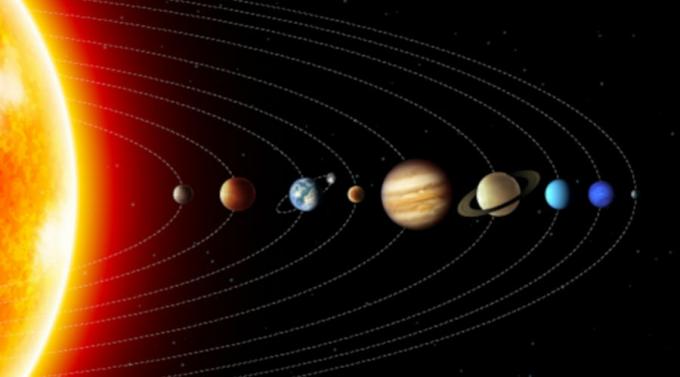
The planets are in order according to their distance from the Sun.
Main features of each planet
→ Mercury
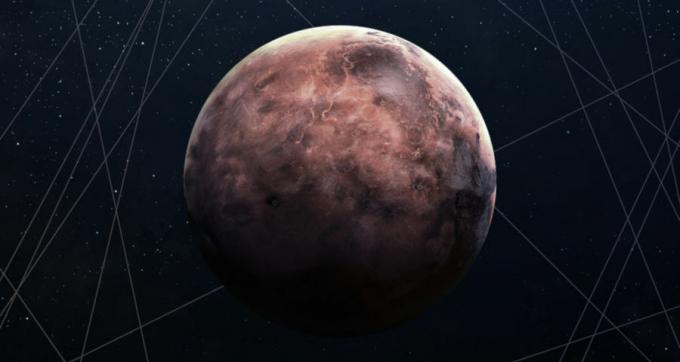
Mercury is the closest planet to the Sun, but not the hottest.
Mercury is the planet closer to the sun, about 57,910,000 km, and it is what has the less mass, that is, it is the smallest among the planets in the Solar System. The temperature on its surface can reach, during the daytime, 550°C.
The planet has in its composition silicates and basalts, which resembles the Earth. Mercury doesn't have satellites, and its surface is riddled with craters resulting from meteorites that collided with the planet. Your atmosphere is composed, for the most part, of helium and, in small quantities, by hydrogen.
Also know:Big Bang Theory
→ Venus
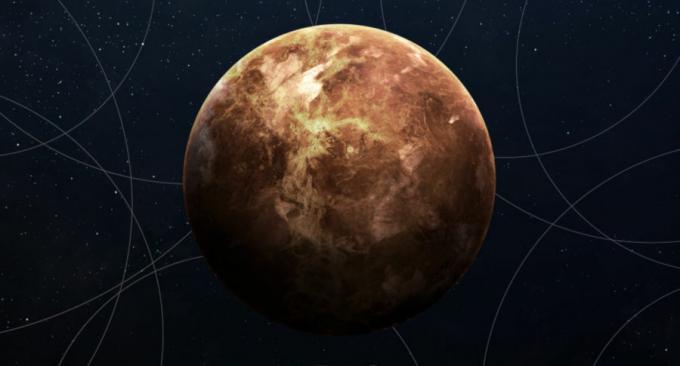
Venus is the hottest planet in the Solar System.
Venus, also known as Estrela Dalva, is the second planet in relation to the Sun, being approximately 108,200,000 km away. It's a planet of easy visibility, before sunrise or after sunset, with the naked eye.
Its characteristics resemble those of Earth, especially mass, diameter and gravity. Another similarity to our planet is found in the atmosphere, composed by carbon dioxide, nitrogenand water vapor. It consists of silicates and basalts.
Despite these similarities, the planet does not present conditions for the existence of life, due to the large concentration of carbon dioxide that maintains the planet's temperature at more than 460°C. Does not have satellites natural.
→ Earth
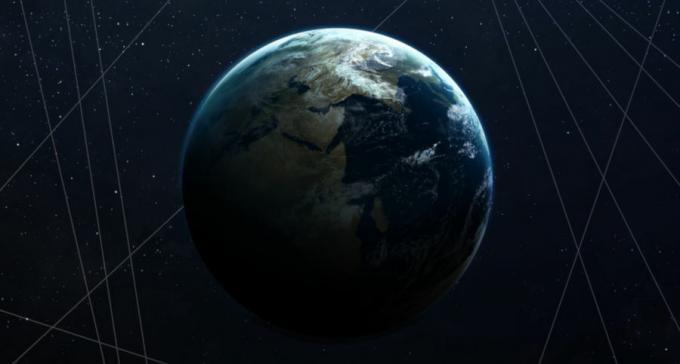
The Earth is the planet that presents conditions for the existence of life.
Earth it's the third planet in order of proximity to the Sun, lying 149,600,000 km away from it. It is the planet that presents conditions favorable to the existence of life. Your atmosphere it's composed by nitrogen, oxygen, water vapor and other gases in smaller amounts.
It has an average temperature of 14°C. It consists of silicates and basalts, and their internal structure divides into core, cloak and Earth's crust. the planet has just a natural satellite, a Moon, which is located about 384,400 km away from it.
See too: Why doesn't the Moon fall to Earth?
→ Mars
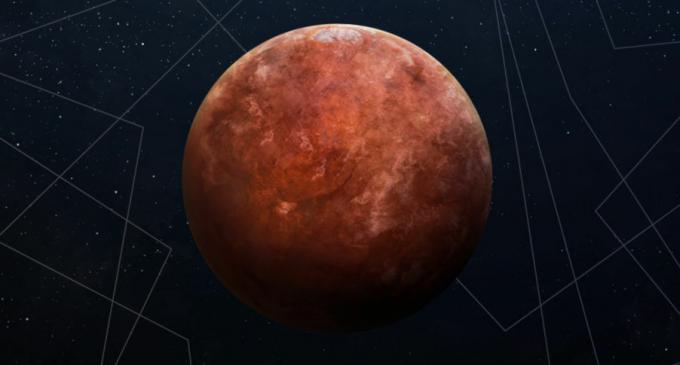
Mars has iron oxide on its surface, which gives it a reddish color.
Mars, also called the Red Planet, is the fourth planet in order relative to the Sun, being approximately 227,940,000 km away from it. It is one of the planets that also have conditions to be seen with the naked eye. It consists of silicates and basalts, and its atmosphere is basically composed of carbon dioxide, nitrogen and some traces of oxygen, carbon monoxideand water vapor.
THE thinner atmosphere provides a variation of temperature between -76°C and -10°C. The ground of Mars is littered with craters formed by the impact of meteorites. This soil is rich in iron and silicon, which gives the planet a reddish color. mars has two natural satellites.
Know more:What is a comet?
→ Jupiter
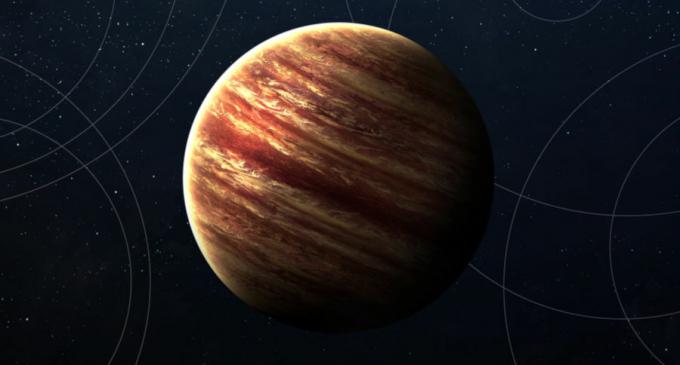
Jupiter is known as the Gaseous Giant.
Jupiter it's the biggest planet of the Solar System having a mass 318 times that of the Earth. Unlike the four planets closest to the Sun, Jupiter is constituted of gases like hydrogen, helium, methane, ammonia and traces of water vapor.
The planet is located approximately 778,330,000 km from the Sun, and is known as the Gas Giant. The temperature on its surface is very low, reaching -100°C. Jupiter is formed by rings made of fine dust and has 16 natural satellites.
→ Saturn
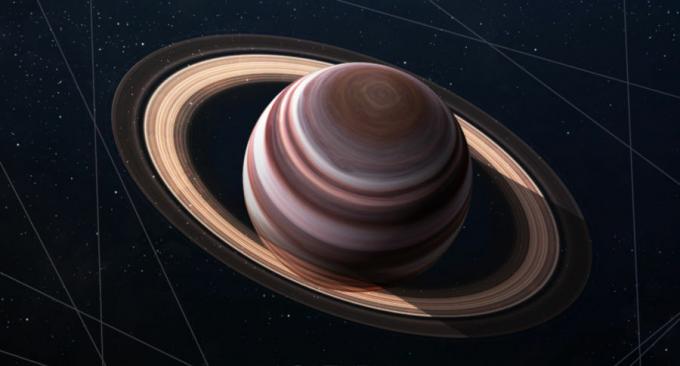
Saturn is known for its ring system composed of ice.
Saturn is located approximately 1,429,400,000 km from the Sun and is the second largest planet of the Solar System. Its composition resembles that of Jupiter: hydrogen, helium, methane, ammonia and traces of water vapor. The temperature on Saturn can reach -140°C. This planet is well known for its rings, composed of ice, that reflect up to 80% of solar radiation. Saturn has 18 natural satellites, the largest being known as Titan.
→ Uranus
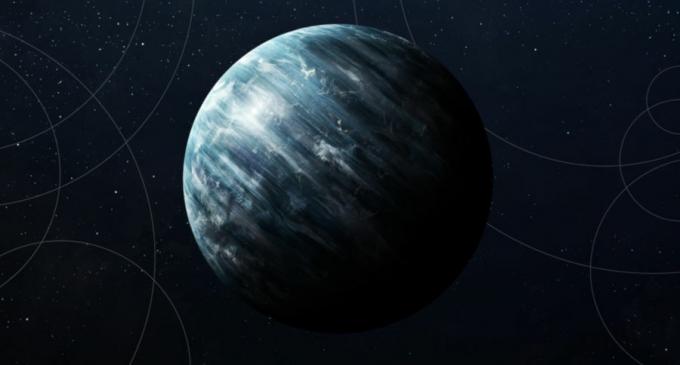
Uranus has a bluish color due to the presence of methane.
Uranus, one of the gas planets, is the third largest planet of the Solar System, being approximately 2,880,990,000 km from the Sun. Its characteristics resemble those of Jupiter and Saturn.
It consists of gases such as hydrogen,helium and methane, which gives it the bluish color. The temperature on the planet can reach -200°C. The planet has a ring system, discovered in 1977, and has about 27 natural satellites. The planet also has approximately 27 moons.
→ Neptune
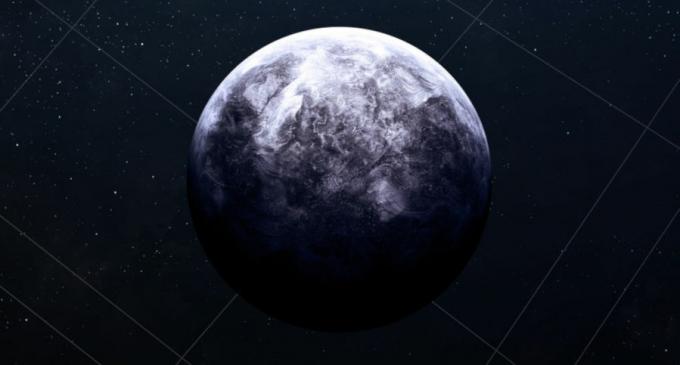
Neptune is the last planet in the Solar System in relation to the Sun.
Neptune was discovered in 1845 and cannot be seen with the naked eye. It is the last planet in the Solar System in relation to the Sun, being about 4,504,300,000 km away from it.
Its composition resembles that of other gaseous planets, consisting of gases such as hydrogen, helium, and methane. The temperature on the planet is extremely low, reaching -218°C. The planet has about 13 natural satellites and also features a ring system.
Why is Pluto not a planet?
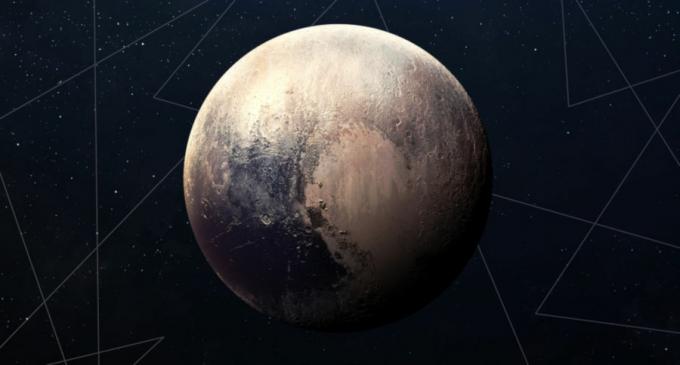
Pluto is no longer considered a planet.
Pluto was considered a planet in the Solar System until 2006. However, the International Astronomical Union (UAI) "downgraded" him to the category of dwarf planet, whereas the new astronomical discoveries pointed to the existence of several celestial bodies with similar features to those of Pluto. Therefore, it would be necessary to increase the number of planets in the Solar System or create a new classification for these found celestial bodies.
Curiosities
One day on planet Venus corresponds to more than one year on planet Earth.
There are several volcanoes on the surface of Mars. These are inactive, and the best known is the Olympus Mons.
Mercury is not the hottest planet, despite being the closest to the Sun. The hottest planet is Venus, due to the concentration of carbon dioxide in it.
Venus is the only retrograde planet, unlike all others.
If you are more interested in this subject, read our text: Curiosities about the Solar System.
By Rafaela Sousa
Graduated in Geography
Our Solar System has eight planets, which are classified into two types, rocky and gaseous. tick with a R the rocky planets and with a G the gas planets.
“Textbook publishers, get ready: Pluto is no longer the ninth planet in the Solar System. About 2,500 astronomers summoned by the International Astronomical Union (IAU) went to Prague, in Czech Republic, and decided, in a vote, to demote the star discovered in 1930 by the American Clyde Tombaugh.
With the decision, the Sun is left with a family of eight planets – Mercury, Venus, Earth, Mars, Jupiter, Saturn, Uranus and Neptune. Downgraded to the "second division", Pluto will now be called a "dwarf planet", a newly created category that will also embrace all approximately spherical objects beyond the Neptunian orbit.”
Among the reasons that led Pluto's demotion to a dwarf planet, we can correctly point out:
